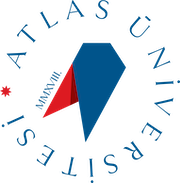| Week |
Subject |
Related Preparation |
| 1) |
Internet Programming structure, Web Technologies overview, HTML, CSS, and Framework concept |
Oral presentation, practice |
| 2) |
the PHP working environment will be established, variable structures will be mentioned, and conditional expressions and loops will be discussed. |
Oral presentation, practice |
| 3) |
Ready-made functions and user-defined functions used in PHP will be discussed. |
Oral presentation, practice |
| 4) |
Data exchange between pages through HTML Forms request types (GET, POST), session variables (SESSION), and cookie variables (COOKIE) will be explained. |
Oral presentation, practice |
| 5) |
MYSQL Database, SQL statements, relations between tables, PHP - MYSQL Relationship, and PHP data security issues will be explained. |
Oral presentation, practice |
| 6) |
Laravel library working environment will be installed, the application folder structure will be introduced and the .env file will be examined in detail. |
Oral presentation, practice |
| 7) |
MVC design patterns will be discussed in detail in the course. Laravel MVC structure will be explained. |
Oral presentation, practice |
| 8) |
Midterm Exam |
|
| 9) |
Routers used in the Laravel library will be examined in detail. Applications will be developed in order to consolidate the subjects in the course. |
Oral presentation, practice |
| 10) |
The controller classes used in the Laravel library will be examined in detail. Applications will be developed in order to consolidate the subjects in the course. |
Oral presentation, practice |
| 10) |
The controller classes used in the Laravel library will be examined in detail. Applications will be developed in order to consolidate the subjects in the course. |
|
| 11) |
HTML Blade engine will be explained in detail. Applications will be developed in order to consolidate the subjects in the course. |
Oral presentation, practice |
| 12) |
Model classes will be explained in detail and relationship structures between tables will be defined. Applications will be developed in order to consolidate the subjects in the course. |
Oral presentation, practice |
| 13) |
Database operations and Eloquent structures in Laravel will be explained in detail. Applications will be developed in order to consolidate the subjects in the course. |
Oral presentation, practice |
| 14) |
Restful API will be detailed and API development with Laravel will be discussed. |
Oral presentation, practice |
| 15) |
Practice |
Oral presentation, practice |
| Course Notes / Textbooks: |
Learning PHP, MySQL, JavaScript, and CSS: A Step-by-Step Guide to Creating Dynamic Websites by Robin Nixon (Sep 3, 2012)
Learning Web Design: A Beginner's Guide to HTML, CSS, JavaScript, and Web Graphics by Jennifer Niederst Robbins (Aug 24, 2012)
Laravel: Up and Running: A Framework for Building Modern PHP Apps 2nd Edition |
| References: |
Learning PHP, MySQL, JavaScript, and CSS: A Step-by-Step Guide to Creating Dynamic Websites by Robin Nixon (Sep 3, 2012)
Learning Web Design: A Beginner's Guide to HTML, CSS, JavaScript, and Web Graphics by Jennifer Niederst Robbins (Aug 24, 2012)
Laravel: Up and Running: A Framework for Building Modern PHP Apps 2nd Edition |
| |
Program Outcomes |
Level of Contribution |
| 1) |
Having knowledge and skills in security algorithms for programming |
3 |
| 1) |
Possesses in-depth theoretical knowledge in information security, cybersecurity, network security, and data protection. |
3 |
| 2) |
Understands information security management systems, national and international security standards, ethical considerations, and legal regulations. |
|
| 2) |
Ability to install and manage software required for end user security |
4 |
| 3) |
Has analytical thinking skills in classifying cyber threats, attack vectors, and defense mechanisms. |
|
| 3) |
Having the ability to install and manage computer networks and use the network operating system |
3 |
| 4) |
Theoretically comprehends security technologies such as cryptography, digital signatures, authentication, and access control mechanisms. |
|
| 5) |
Can establish network security policies and effectively manage security tools such as firewalls and intrusion detection/prevention systems. |
|
| 6) |
Has expertise in applying cryptographic algorithms, using data encryption techniques, and analyzing cybersecurity intelligence. |
|
| 7) |
Can conduct penetration tests and security assessments to identify system vulnerabilities and develop preventive measures. |
|
 BİLGİ PAKETİ / DERS KATALOĞU
BİLGİ PAKETİ / DERS KATALOĞU
